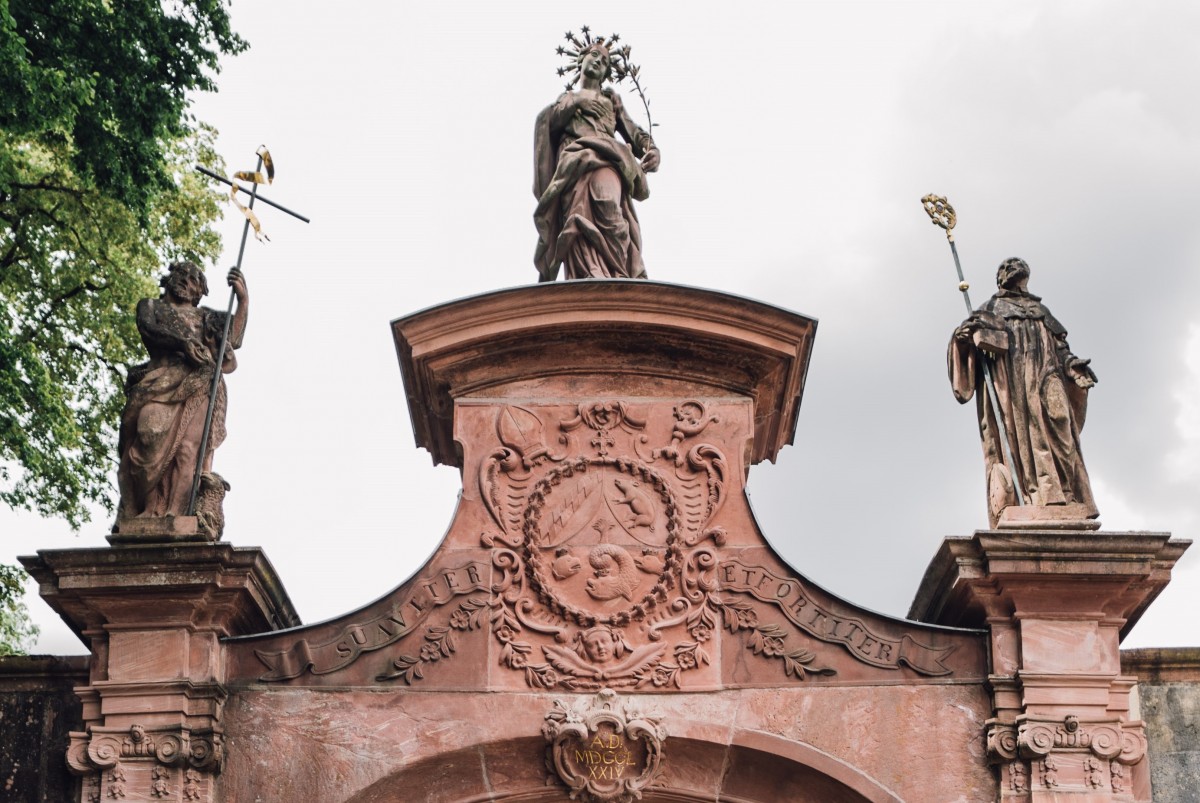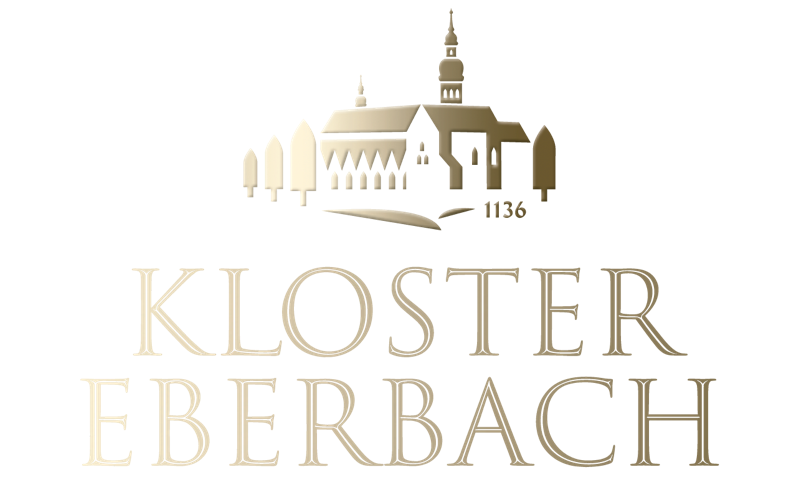

Museum Highlights
The only surviving stained glass window of the medieval monastery church, placed in the former Romanesque warm room, is of outstanding value. Probably once located in the southern transept, this wattle-and-daub window consists of unpainted glass in an ornamental lead framework and is called "grisaille" (French gris = grey) because of the resulting grey hue. Grisaille glazing strictly followed the order's commandment to dispense with colour and figures in the design of the window closures in the churches of the "Grey Monks". As the oldest surviving (ornamental) Cistercian stained glass window in the German-speaking world, the Eberbach grisaille is of prime importance both for the history of the order and for art history.

The Baroque portal sculptures by Nikolaus Binterim were placed above the newly built west portal of the monastery in 1774. Today, there are replicas there. The sculptures depict the main patroness of the order, Mary Immaculate , the secondary patron, John the Baptist, and the founder of the abbey, St Bernard.
Stained glass fragments of the late Gothic window glazing of the Eberbach cloister from a Middle Rhine stained glass workshop have been part of the exhibition since 2013. These have been restored and framed after intensive efforts by the Kloster Eberbach Foundation, the Mittelrheinische Gesellschaft zur Pflege der Kunst e.V. and the Freundeskreis Kloster Eberbach e.V.. The stained glass was created around 1500 and is presented in the abbey museum on permanent loan from the State of Hessen as the only available evidence of the formerly complete cloister glazing.

The museum also houses the sculpture of a seated monk, which has been interpreted as a representation of St. Bernhard. Certainly, this is an outstanding achievement of late Gothic art in the Middle Rhine region.
Bernard of Clairvaux (1090/91–1153), entered the order in Citeaux in 1113 with thirty like-minded friends and relatives. In 1115 he took over the office of abbot in the newly built monastery of Clairvaux, from where he made a decisive contribution to the growth and spread of the Cistercian order. Through him, the reform monastery was transformed into an extraordinary centre that helped shape the religious and economic development of Europe. In 1136, at the request of the Archbishop of Mainz, he came to the Rheingau with twelve other monks from Clairvaux and founded Kloster Eberbach.
Also worthy of mention is the Byzantine cross discovered in 1992 during work in the ridge turret, whose origin dates back to before the foundation of Eberbach. The exact origin of the cross and its route from the Orient to Eberbach are still unknown. A connection with the history of the crusades cannot be ruled out.

Bianca Le Meur
Tours, Monastery Ticket Office and Abbey Museum Manager
Phone: + 49 (0) 6723 9178-149
Mail: bianca.lemeur@kloster-eberbach.de




